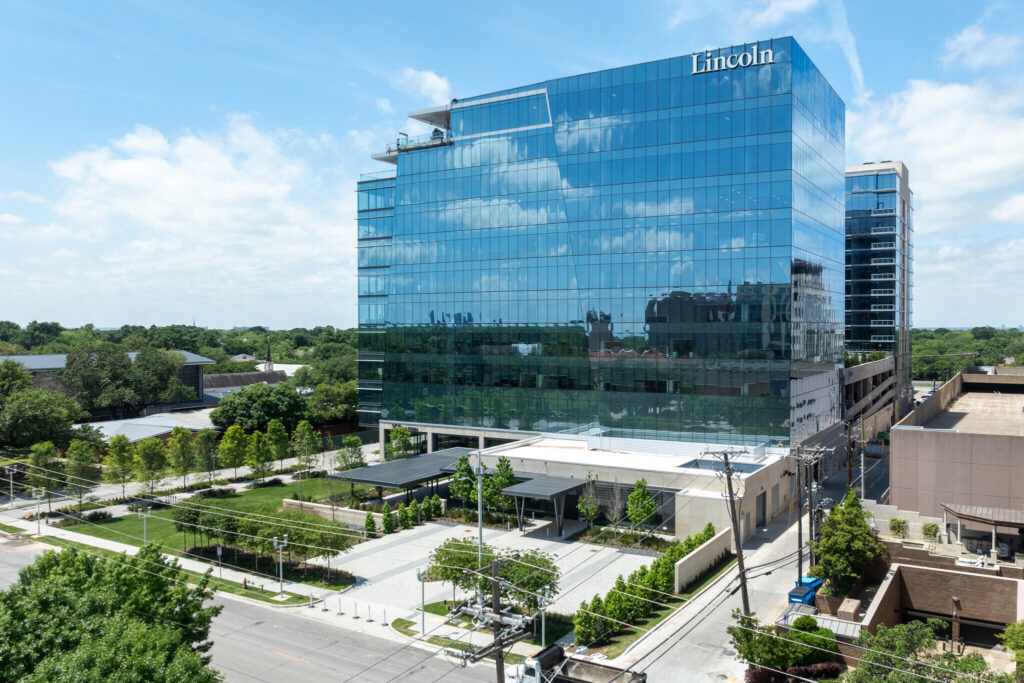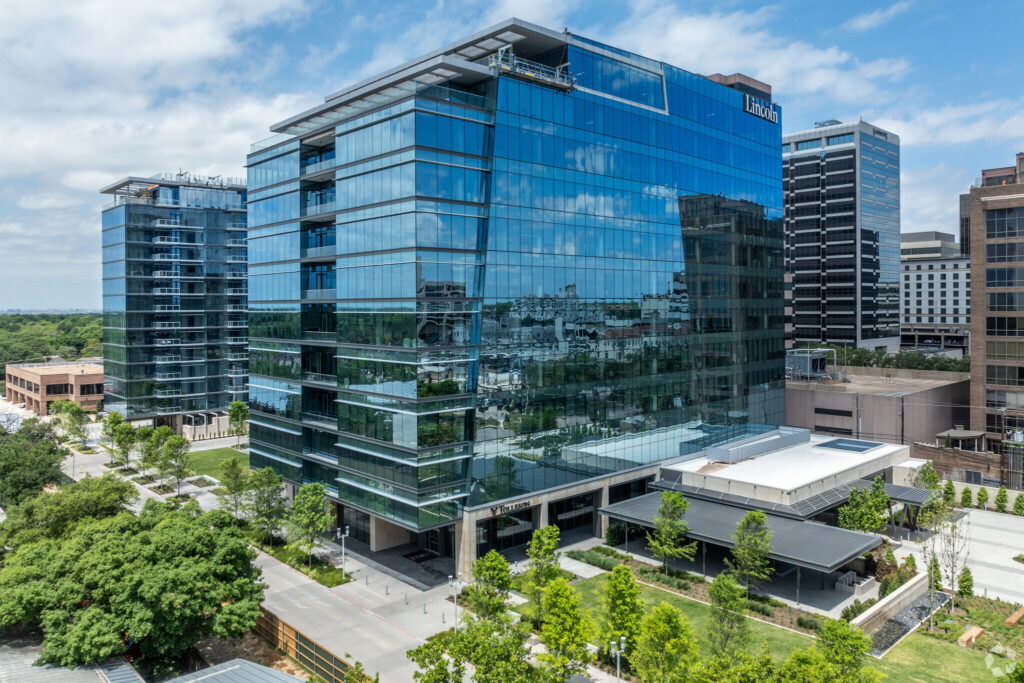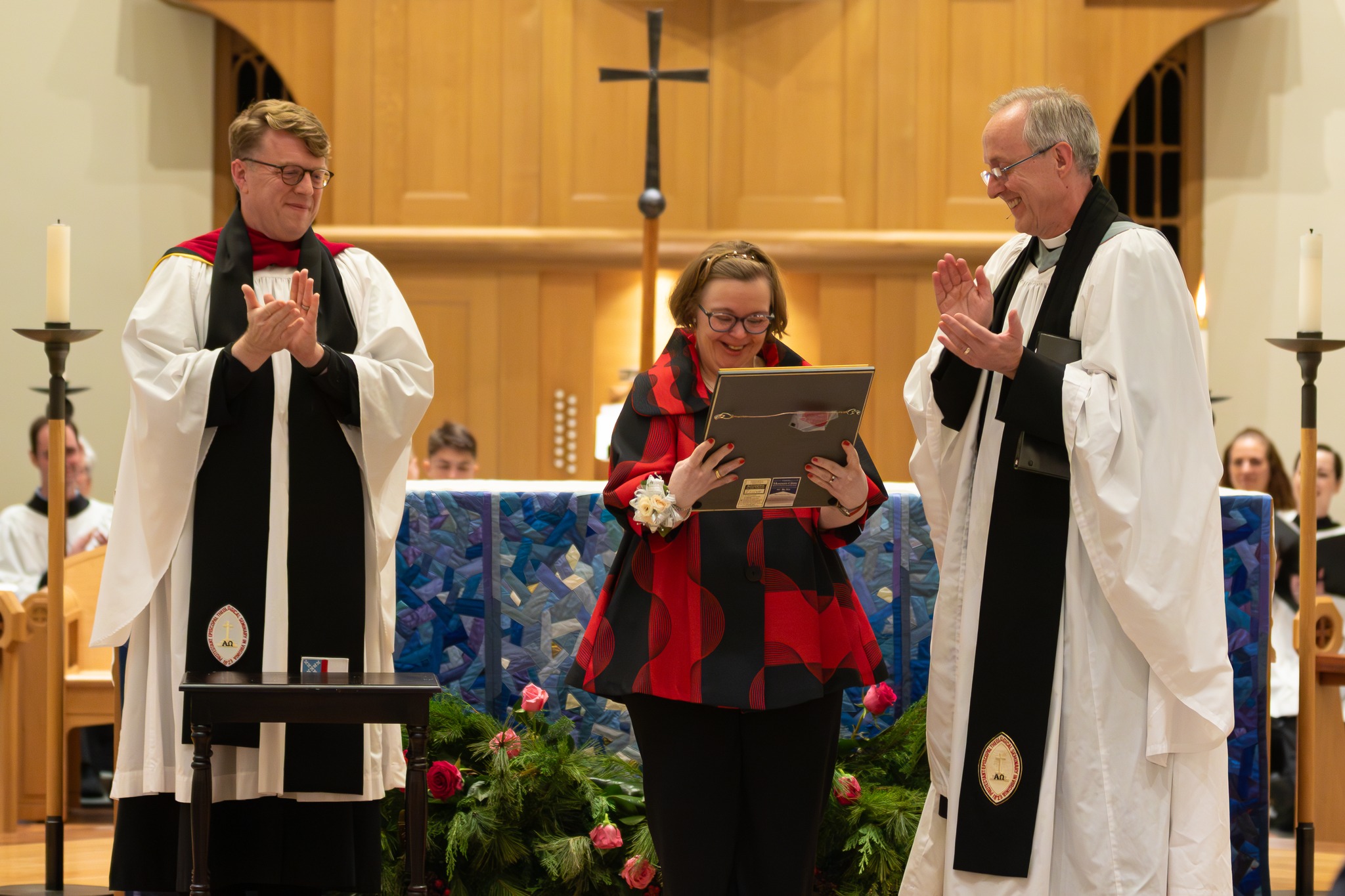
The Ministry of Mitzi Budde
Mitzi Budde, D.Min, Head Librarian and the Arthur Carl Lichtenberger Chair for Theological Research, retires after 33 years. The Rev. A. Katherine Grieb, Ph.D., ’83, reflects on the profound impact she has had on VTS.

Together we make The Episcopal Church stronger

VTS alum the Rev. Dr. Christopher D. Girata reflects on how an innovative ground lease dedicated to supporting local nonprofits laid the foundation for a record-breaking $76 million capital campaign.
When Saint Michael and All Angels Episcopal Church in Dallas planned its first ever capital campaign, Rector the Rev. Dr. Christopher D. Girata was clear about one thing: the church must lead by example and model generous giving.
Before launching the campaign, the church took stock of its assets and thought creatively about what it could do with them to benefit the community. “I wanted the institution to model generous giving so that when we went to individuals, we could ask them to do the same,” Girata explains.
His approach led to an innovative impact model under which Saint Michael leased land it owned to a developer and dedicated the income to supporting local nonprofits.
Girata credits this act of generosity by the church for the success of its capital campaign, which went on to raise more than $76 million. The total not only makes it the largest capital campaign ever undertaken by an Episcopal Parish, but it was also more than double the $35 million that campaign consultants had estimated was the maximum amount it would be able to raise.
Saint Michael had acquired an undeveloped piece of property in the 1990s, with the plan to expand the church building on to it. But Girata says the idea never really got off the ground, largely because the spirit of the congregation was not one of “build more buildings for ourselves.”
When Girata arrived the land had still not been developed, but by now The Episcopal Church at large was seeing declining membership, and there was a concern that Saint Michael would suffer a similar trend, which would impact the amount it would receive in annual giving. As a result, the church was considering leasing the land instead of building on it, and using the income for its operating budget.
“I didn’t want [the income] to actually come into the operating budget because I think churches that have big extra funding outside of annual giving become lazy. We had this very valuable asset, so, I said, let’s capitalize the asset, but let’s give the proceeds away,” Girata explains.
The church signed a 99-year lease with Lincoln Property Group to develop the land into a multi-use space, including an office tower, restaurant, parking, residential tower and 1.3 acres of green space. Around 85% of the annual income from the ground lease goes into a special fund, the Horizon Outreach Fund, which is directed by the Horizon Outreach Fund Committee and held by the All Angels Foundation. “The church cannot use the income for any annual operations. That is legally binding. It takes a super majority of both vestry and foundation trustees to change it. We basically made it as hard as possible to undo,” Girata says.
The fund, which had a balance of $3.4 million on December 31, 2024, has already started implementing its venture philanthropy model and has distributed substantial grants to several nonprofits in the Dallas Fort Worth area. It is projected to have gifted more than $1 million to local community organizations by the end of 2028.
As income from the ground lease continues to come in, Girata estimates that within 20 to 30 years, the Horizon Outreach Fund will be the third largest state-based foundation in Texas, after the Diocese of Texas and Buckner International, a Baptist foundation. “It’s huge and it’s completely transformative when it comes to inspiring church members about what they can do to actually impact the community,” he says.
With the first income from the ground lease allocated, Girata felt empowered to start fundraising for the church’s capital campaign to improve its own building. He explains that the church building, which dates back to the 1950s, had been added to bit by bit over the decades and did not function well. “It was just a mess. It was a rat’s nest of lots of long skinny hallways. You could enter the building at least 14 different ways. It was nine turns to get from the nave of the church to the restroom. I did not really want to make the building bigger, although technically we will have more square footage, I really wanted to make the building smarter. I wanted to create community space.”
The construction project focused on upgrading the building’s infrastructure for long-term sustainability, expanding community spaces to encourage gathering and deeper fellowship, and investing in educational spaces, including renovating Saint Michael Episcopal School and the church’s Educational Wing, which provides space for children, youth and adult formation programs.
Saint Michael had never done a capital campaign before, except to build the original church in the 1950s. “This was a big culture shift and I knew I had to have a good compelling story in order to make that shift. That’s where that first phase of giving away the land income really was key because person after person, when they came in and they heard my pitch – I had over 2,500 meetings over the course of this campaign – more than half of them, when they realized the church had been very generous in giving away this asset to the community, felt compelled to make a gift beyond what they had planned to give because they wanted to follow the lead of the church itself. I wanted the institution to model what I was asking the individual to do, and that was key to making it work.”
Consultants who had advised Saint Michael on the campaign suggested the maximum amount it would be able to raise was $35 million. Girata always felt they could raise more, so he set the initial target at $50 million, even though he knew this goal would be a stretch. “It was seven times our annual budget. Usually when you try to raise more than five times your annual budget, it is pushing it. We ended up raising more than 10 times our annual budget.”
The $50 million target was originally set before Covid. But after the pandemic, construction costs increased significantly, so even after scaling back the building plans, the campaign goal was increased, first to $60 million then to a stretch target of $65 million. Meanwhile, the interest rate Saint Michael would have to pay on a bridge loan to fund construction while gifts came in rose sharply from 2% to 8%. “A bridge loan that would have cost us $500,000 to $700,000 was suddenly going to cost us more than $4 million. So, we told the story. We went to the congregation, to all of our givers, and explained that we were taking pledges over five years, but our construction was over two years, so we needed to have a bridge loan against the pledges.” Girata explained that if they were able to give earlier or give more, their gift would actually have more of an impact than just the dollars itself because it would help Saint Michael borrow less, which then lowered the interest expense.
The story was very well received because most of the parishioners did not want the church spending money on interest expenses, Girata remembers. More than 85% of the people who had already given, agreed to either give faster or give more. As a result, the cost of the bridge loan dropped from more than $4 million to under $500,000.
“People were giving more because they saw how well run the whole program had been. These are all business people, and because we were monitoring things so closely and communicating things so clearly, a lot of people started giving more because they realized that their gifts were going to be used well,” Girata says.
He also thinks it was important that he, as the rector, personally asked parishioners to give. “I personally asked around 80% of people and it was almost always face to face. I would only do it by phone or zoom if I absolutely had to. I would wait months to see someone face to face because face to face is just so much more effective,” he says.
For churches that would like to do something similar to Saint Michael, Girata advises them to be creative about what gifts and assets they have, and how these assets can be used. “Every group has a particular set of gifts. Sometimes it’s land, sometimes it’s identity, sometimes it’s mission, sometimes it’s social capital. Everybody has some kind of assets that they can capitalize. Every church can give more generously of something. And so long as they can figure that out and then they take the leap of faith to give, then they can turn around to their members and say, look at what we have done institutionally. Now we need you to do this individually.”



Mitzi Budde, D.Min, Head Librarian and the Arthur Carl Lichtenberger Chair for Theological Research, retires after 33 years. The Rev. A. Katherine Grieb, Ph.D., ’83, reflects on the profound impact she has had on VTS.

The Thomas Dix Bowers Preaching Fellowship Fund was established at Virginia Theological Seminary on May 6, 2008, by family and friends of the Rev. Dr. Thomas Dix Bowers, VTS ’56.

The Rev, Rode Molla, Ph.D., Assistant Professor, and the first Berryman Family Chair for Children’s Spirituality and Nurture at Virginia Theological Seminary, reflects on the legacy of the Rev. Jerome Berryman, D.Min.

Virginia Theological Seminary was honored to confer the Dean’s Cross for Servant Leadership on Ellen Wofford Hawkins in recognition of her deep faith and ability to bring sunshine into the lives of others.